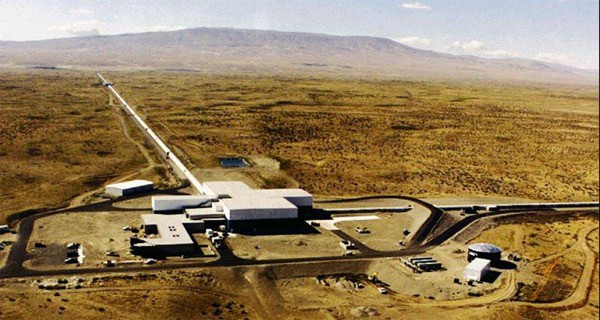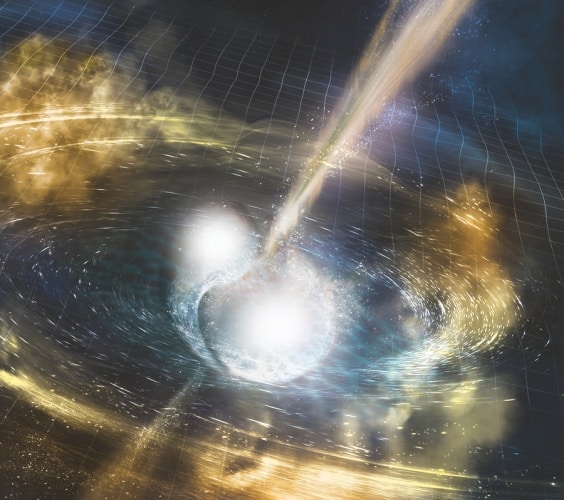
The upgraded facility, known as Advanced LIGO Plus (ALIGO+), will probe the origins and evolution of black holes and help scientists learn about extreme physics from the first seconds after the universe's birth.
The project will improve the two existing Laser Interferometer Gravitational wave Observatories (LIGO) in the United States, and will see a new facility built in India.
The Nobel-prize winning LIGO project confirmed the existence of gravitational waves, a component of Einstein’s theory of relativity.
Gravitational waves are ripples in space caused by massive cosmic events such as the collision of black holes or the explosion of supernovae. They are not electromagnetic radiation, and as a result were undetectable until the technological breakthroughs at LIGO enabled in part by UK technology.

At each LIGO site, twin laser beams are transmitted down two 4-kilometre long tubes kept under a near-perfect vacuum, and arranged as an L-shape. The beams are reflected back down the tubes by mirrors precisely positioned at the ends of each arm.
As a gravitational wave passes through the observatory, it causes extremely tiny distortions in the distance travelled by each laser beam.
As a result of the UK-built systems which hold the mirrors in place, a distortion of just one-ten-thousandth the diameter of a proton can now be measured – not only enabling the detection of gravitational waves for the first time, but also making LIGO the most sensitive measuring instrument ever.
ALIGO+ is expected to illuminate the origins and evolution of stellar-mass black holes, allow precision tests of extreme gravity, enable detailed study of the equation of state of neutron stars, and permit new tests of cosmology, including fully independent constraints on the Hubble constant.
Technology improvements arising from the project are expected to include quantum optics, quantum information theory, materials science, optical technology, precision metrology and physical standards.
Explaining the significance of the facility, Prof Sheila Rowan, director of the Institute for Gravitational Research at Glasgow University, said: “If a normal telescope ‘sees’ the Universe, LIGO is akin to ‘hearing’ the Universe. The improved sensitivity from ALIGO+ will allow us to better understand what the Universe is telling us, information that we’ve been unable to hear until now.”
Commenting on the UK’s involvement UK Research and Innovation chief executive, Prof Sir Mark Walport, said: “The UK’s technological and scientific expertise will continue to play a crucial role in ALIGO+, which aims to further increase our understanding of the events that shape the universe. The UK investment in ALIGO+ and support for a third gravitational wave detector in India underlines UKRI’s commitment to developing existing collaborative research and innovation programmes with partners.”
In the UK, the ALIGO+ project will involve the Universities of Glasgow, Birmingham, Cardiff, Strathclyde and STFC’s Rutherford Appleton Laboratory. The UK is also supporting the construction of a third LIGO detector, in India. This will form a global network of five detectors – the others being in Italy and Japan.
A recent UK spinout from this work has been the development of a ‘nanokicking’ technique that takes sophisticated measurement technology, based on the laser interferometer systems designed in the UK for the Nobel Prize-winning gravitational wave detection, to turn stem cells into bone cells. Clinical trials are now taking place in Scotland to apply nanoscale vibration to patients with spinal injuries in an attempt to slow down and reverse the effects of a condition called ‘disuse osteoporosis’ by turning stem cells in to healthy bone.
The US National Science Foundation is providing $20.4m funding for ALIGO+, and UK Research and Innovation (UKRI) £10.7m ($US14.1m), with additional support from the Australian Research Council.




Poll: Should the UK’s railways be renationalised?
I think that a network inclusive of the vehicles on it would make sense. However it remains to be seen if there is any plan for it to be for the...